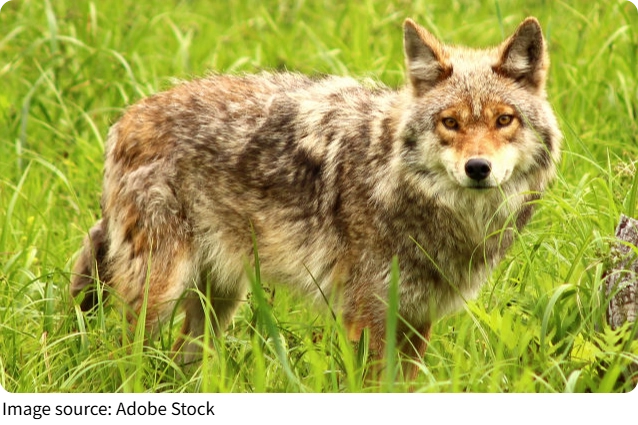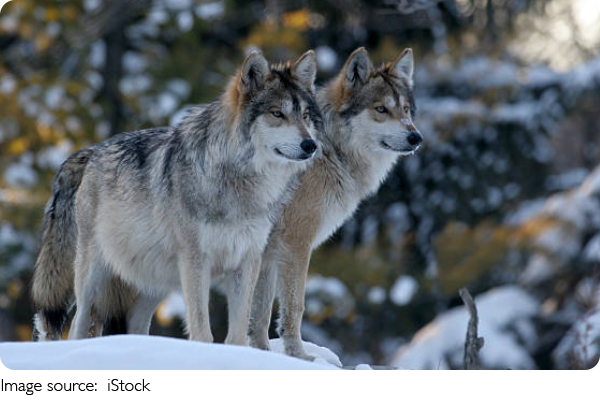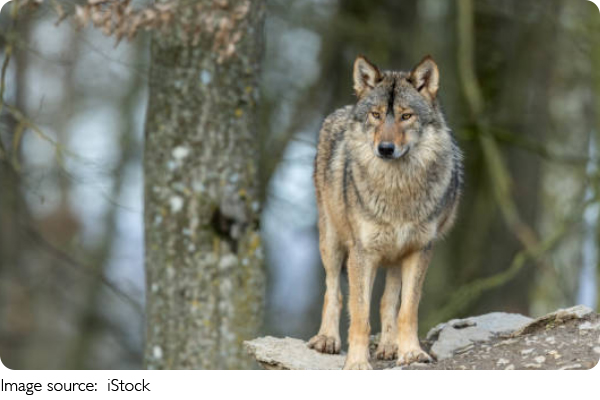Return of Wolves

Hey Lykkers! Imagine this: wolves howling once again in the Scottish Highlands after more than 200 years of silence. Sounds like something straight out of a nature documentary, right?
Well, recent studies suggest that reintroducing wolves to these highlands could not only restore nature but might also play a crucial role in fighting climate change. So, let's dive in and see how wolves might just be the eco-heroes we never knew we needed.
The Disappearing Wolves and the Forest Crisis
Wolves were once a key part of Scotland's landscape, but hunting and human activities pushed them out more than two centuries ago. Since then, the balance of the ecosystem has shifted.
Without wolves to control the red deer population, the deer have skyrocketed in numbers, and these animals are eating up young trees and shrubs, preventing forests from regrowing.
Now, the situation is pretty grim. Forest cover in Scotland is less than 4% of the land, one of the lowest in Europe. This lack of forests means less carbon dioxide is being absorbed from the atmosphere, which isn't great news for a country that's trying to meet its climate goals. But researchers from the University of Leeds think that there’s hope: the return of the wolves.
The Role of Wolves in Nature’s Balance
Here’s where things get interesting: wolves are what scientists call a “keystone species.” These species play a crucial role in keeping ecosystems in balance. For wolves, their role is to hunt animals like deer that graze on plants. Without predators like wolves, the herbivore population (like deer) can explode, leading to overgrazing, which damages plants and trees.
In places like Yellowstone National Park in the U.S., the reintroduction of wolves helped control deer populations, allowing trees and plants to recover. This had a positive effect on biodiversity, improving the entire ecosystem. Imagine what that kind of effect could do for Scotland’s struggling forests!

Wolves and Climate Change: A Surprising Connection
So, what does all this have to do with climate change? Well, when wolves help control deer populations, they also help the forest regenerate. As more trees grow, they absorb carbon dioxide from the atmosphere, which helps reduce the greenhouse gases that contribute to climate change.
In fact, a study published in the British Ecological Society suggests that by reintroducing wolves to certain areas in Scotland, the forests could expand, significantly boosting the country's ability to absorb carbon. Researchers believe that each wolf could contribute to removing up to 6,080 tons of CO2 from the atmosphere annually. That’s a lot of carbon—and a big step toward Scotland meeting its climate targets.
The Economic Potential of Wolves
But there’s more! Reintroducing wolves and restoring forests could also provide economic opportunities. As these forests expand, they would help landowners generate income through carbon credits—essentially selling the carbon they’ve absorbed to businesses that need to offset their emissions. This could create new revenue streams for local communities while benefiting the environment.
Challenges and Solutions
Of course, reintroducing wolves to Scotland is not without challenges. There are concerns about potential conflicts between humans and wolves, especially with large predators. However, scientists and conservationists are already learning from successful wolf reintroduction projects in places like the U.S. and Europe. They believe that with proper planning and community engagement, they can find a way to make it work.
The key, according to Lee Schofield, one of the study’s authors, is to understand public concerns and include local communities in the decision-making process. By doing so, we can ensure that the benefits of reintroducing wolves outweigh the challenges.

Wolves as the Eco-Heroes We Need
It may sound like a bold plan, but reintroducing wolves to Scotland could be an exciting step toward restoring balance to the country’s ecosystems and tackling climate change. Not only could wolves help restore forests, but they could also play a significant role in helping Scotland meet its climate targets. The return of these magnificent creatures may just be the answer to some of the environmental challenges Scotland faces today.
So, what do you think, Lykkers? Could wolves be the key to saving Scotland’s forests—and the planet? Let’s hope we’ll hear their howls again soon!


